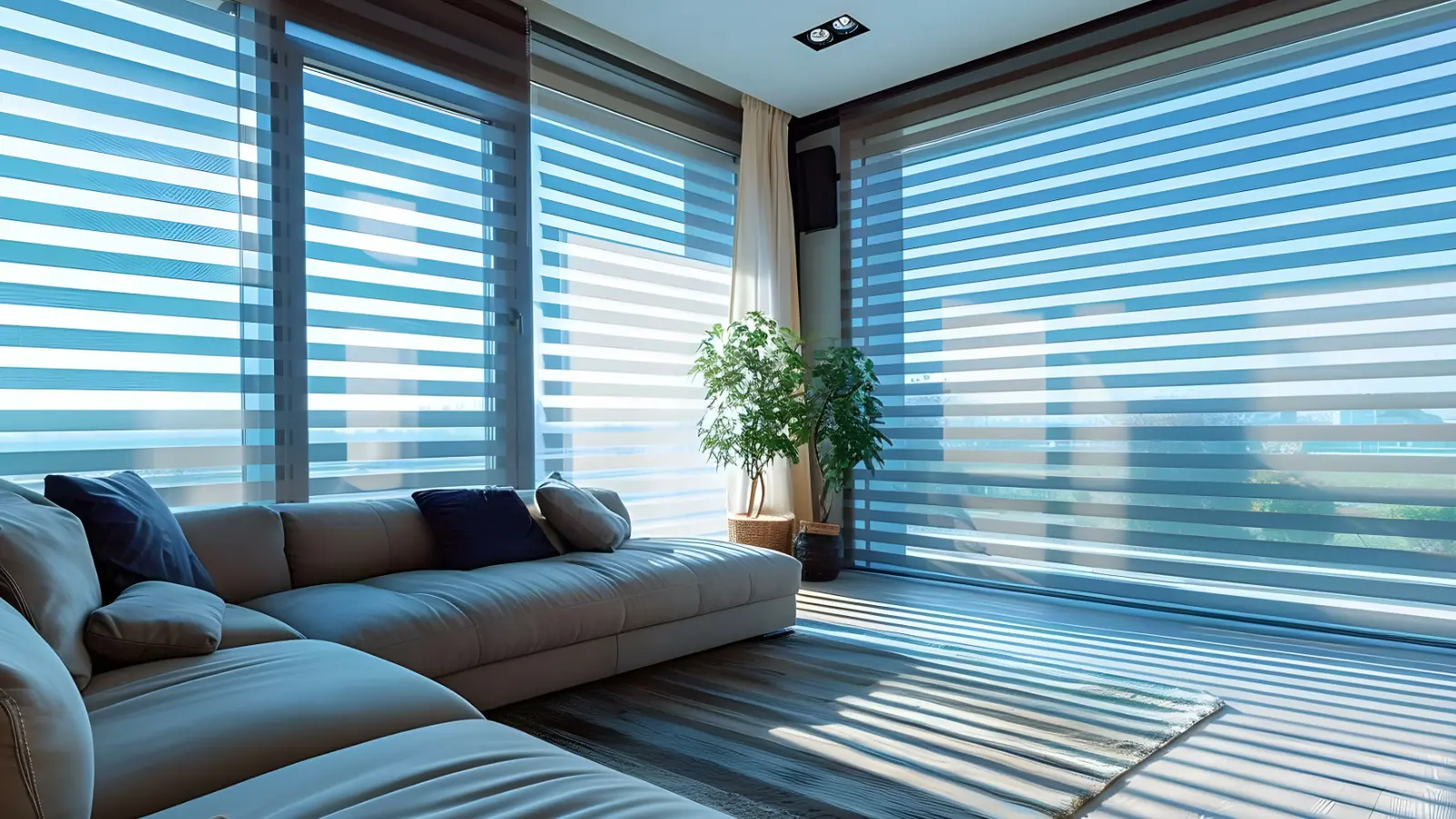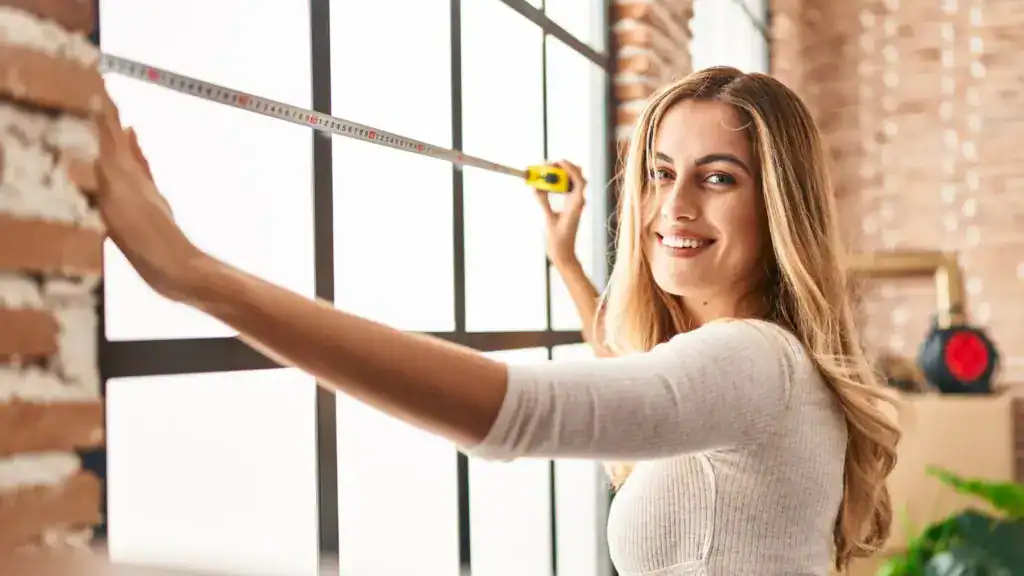Types of Window Shades & How They Differ: A Beginner’s Guide

We hear you’re shopping for shades — and not the kind you wear…
That’s great! It’s music to our ears at Aero Shade, where we live and breathe window shades.
Maybe you’ve done your research, and perhaps you’re new to the game, confused by the dazzling array of options unfolding before your eyes.
We’re here to simplify things for you. Top-notch window treatments are an investment, like furniture, and they have just as much impact on a room’s comfort and ambiance. You deserve the best window treatments for your dollar.
Shades Vs. Blinds: Clarifying the Difference
The words “shades” and “blinds” are sometimes used interchangeably. People refer to blinds when they mean shades and vice versa.
But while shades and blinds serve the same basic function, they do it differently.
- Blinds have individual slats that can be tilted open or closed to control light and privacy. They’re more structured than blinds and made of hard materials like vinyl, metal, and wood.
- Shades are made from a single sheet of material and roll up or down to cover a window. They’re more flexible in terms of design and material.
Shades also have far more variations and types, and that’s where the real bewilderment begins.
Types of Window Shades
1. Roller Shades
Roller shades are one of the most common and versatile options. They consist of a single fabric sheet that rolls onto a tube when raised.
Benefits
- Perfect for a clean, modern look.
- Available in light-filtering, blackout, and solar fabrics.
- Have a simple mechanism that’s easy to maintain and operate.
A Window Covering Manufacturers Association study found that roller shades are the top choice for minimalist homes due to their sleek profile and ease of use.
2. Solar Shades
Solar shades reduce glare and block UV rays while preserving your view outside.
Benefits
- Protect your furniture and flooring from fading.
- Keep your home cooler by blocking heat.
- Allow you to see outside even when the shades are down.
According to the US Department of Energy, solar shades can reduce solar heat gain by up to 80%, making them an eco-friendly choice.
3. Silhouette Shades
Silhouette shades feature soft fabric vanes suspended between two sheer fabric layers. They combine the functionality of blinds and shades.
Benefits
- Adjustable vanes to control the amount of light entering the room.
- Graceful, sophisticated appearance.
- Provide daytime privacy while allowing natural light to filter through.
Interior designers often recommend silhouette shades for living rooms and dining areas to blend light control and elegance.
4. Top-Down Bottom-Up Shades
These shades can be lowered from the top or raised from the bottom, giving you more versatile light and privacy control.
Benefits
- Ideal for rooms where you want both light and privacy.
- Suitable for any room, including bedrooms and bathrooms.
- Available in various fabrics and styles.
A survey by HomeDecor.com (now defunct) determined that top-down bottom-up shades are a favorite among homeowners who value flexibility and customization in their window treatments.
5. Blackout Shades
Blackout shades block nearly all light, making them a top choice for bedrooms and media rooms.
Benefits
- Complete darkness for restful sleep.
- Help to insulate windows, reducing energy costs.
- Provide a layer of sound insulation.
A study published in the Journal of Sleep Research confirmed that blackout shades can improve sleep quality by creating a dark and quiet environment.
6. Motorized Shades
Motorized shades can be controlled with a remote, smartphone app, or smart home system. Some systems operate automatically or according to a programmed schedule.
Benefits
- Easy control of hard-to-reach windows.
- Compatible with smart home systems like Alexa and Google Home.
- Their cordless design is safer for homes with children and pets.
SmartHome Magazine asserts that motorized shades are part of a trend toward smart home upgrades, offering convenience and a modern aesthetic.
7. Roman Shades
Roman shades have a heavier fabric that stacks into soft, cascading folds when raised.
Benefits
- Classic, sophisticated aesthetic.
- Available in multiple fabrics, patterns, and textures.
- Provide good insulation.
Roman shades are often installed in dining rooms and bedrooms due to their luxurious look and feel.
8. Pleated Shades
Pleated shades are crafted from fabric folded into crisp pleats that neatly stack when raised.
Benefits
- Require minimal space when raised.
- Often more affordable than other types of shades.
- Available in various opacities for tailored light control.
Pleated shades are popular for their budget-friendly pricing and stylish appearance.
9. Cellular Shades
Cellular shades, or honeycomb shades, are like double-sided pleated shades. The layers of pleated fabric form a series of honeycomb-shaped cells.
Benefits
- Superior insulating properties.
- Provide additional sound insulation.
- Available in single, double, or triple-cell configurations for varied insulation levels.
- May qualify buyers for local and federal tax credits.
The US Environmental Protection Agency recommends cellular shades for their outstanding energy efficiency, which can significantly reduce heating and cooling bills.
10. Matchstick Shades
Matchstick shades are woven from natural materials like bamboo, reeds, and grasses. Threads or cords tie the thin wooden or bamboo slats together.
Benefits
- Organic, rustic appearance.
- Admit soft, filtered light.
- Add texture and Bohemian style to a room.
Matchstick shades are favored in sunrooms and coastal-themed homes for their blend of natural beauty and privacy.
11. Outdoor Shades
Outdoor shades provide shade and privacy on patios, porches, and other outdoor spaces.
Benefits
- Shield you from harmful UV rays while enjoying outdoor spaces.
- Keep outdoor areas cooler; protect outdoor furniture.
- Made from weather-resistant materials to withstand the elements.
Even in extreme heat, outdoor shades can keep your deck or patio comfortable and enjoyable.
FAQs: Types of Shades
Q: How do I choose the right type of shade for my home?
Consider the room’s function, your light and privacy needs, and your design preferences. For example, blackout shades are ideal for bedrooms, while solar shades work well in living rooms.
Q: Are motorized shades worth the investment?
Yes, if you value convenience and smart home integration. They’re especially useful for hard-to-reach windows; automating your shades can boost your home security.
Q: Can I install window shades myself?
Although many window shades are DIY-friendly, professional installation ensures a perfect fit and smooth operation, especially for motorized or custom-sized shades.
Q: What are the benefits of using cellular shades for energy efficiency?
Cellular shades offer superior insulation due to their unique cell structure, which traps air and helps regulate indoor temperatures. They may also qualify you for a local or federal tax credit.
Q: Are there shades that offer both privacy and light control?
Top-down bottom-up and silhouette shades are excellent options for privacy and light control. Top-down bottom-up shades can be adjusted to allow light in from the top while maintaining privacy at the bottom, and silhouette shades filter light while providing daytime privacy.
Q: How do I maintain and clean my window shades?
We recommend regular dusting or vacuuming with a brush attachment for most fabric shades. For more durable materials, like those of matchstick or solar shades, try using a damp cloth and mild detergent. Always refer to the manufacturer’s care instructions for the best results.
Q: Can blackout shades help with noise reduction?
Yes, blackout shades offer an additional layer of sound insulation, making them a good choice for rooms where noise control is essential. Their thick, dense fabric helps absorb sound.
Q: What are the environmental benefits of choosing natural material shades like matchstick shades?
Matchstick shades are made from sustainable materials like bamboo, reeds, and grasses. They’re biodegradable and take less energy to produce than synthetic materials, reducing your home’s environmental impact.


